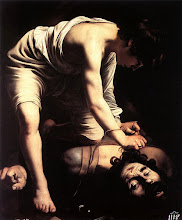
By David Paulin
Originally pulished at The American Thinker and Front Page Magazine
President Obama gave the Castro brothers a when shaking hands with counterpart Raul at Nelson Mandela’s funeral. But that propaganda victory for the communist tyranny meant little to six ordinary Cubans who, on Christmas Eve, were declared lost at sea by the U.S. Coast Guard.
The Cubans — three men and three women — were no doubt aware of the handshake brouhaha when they departed the Dominican Republic on December 17 on an illegal boat trip to Puerto Rico, after alerting relatives in the United States about their estimated arrival date. To them, Obama’s handshake wasn’t a gesture likely to improve their dead-end lives — not in a country designated by the United States as a state sponsor of terrorism and regularly condemned by human rights groups.
Relatives of the Cubans alerted the Coast Guard when their boat failed to arrive, thus setting off a four-day air search as two aircraft flew a total of 22 hours over 22,000 square nautical miles, but on Tuesday evening the search was called off. “While the fate of (these) people may never be known…our thoughts and prayers are with their families and loved ones during this difficult time,” said Coast Guard Capt. Drew Pearson in a on Christmas Day.
The Cubans, whose names were not released, join untold others who have died at sea to fulfill their dreams of coming to America, a country that to them remains a beacon of freedom — even as President Obama bows to foreign leaders, shakes hands with tyrants, and apologizes for America’s supposed sins. The Castro regime has all but stamped out Christmas in Cuba, so it is especially tragic and sad that the Cubans who perished never saw Christmas in Puerto Rico, a holiday that would have been similar to what Cubans enjoyed before Castro’s communist revolution.
In an Op-Ed in The Washington Times, Republican Congresswoman Ileana Ros-Lehtinen
“Shaking Raul Castro’s hand, while dismissed by some as only a handshake, not only emboldens the regime, but will not stop the atrocious acts against the Cuban people. Mr. Obama extended his hand to Raul Castro, even though the Castro brothers are unwilling to unclench their fist over the Cuban people.”Those words are certainly not news to ordinary Cubans — even if they fall on deaf ears in the Obama administration.
 Grand Hotel.
Grand Hotel.









